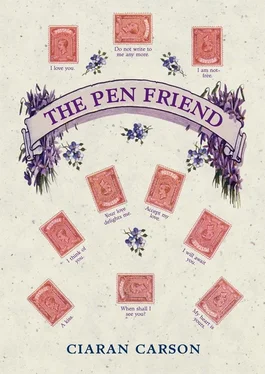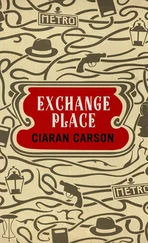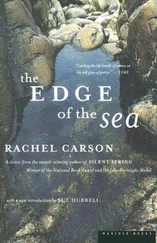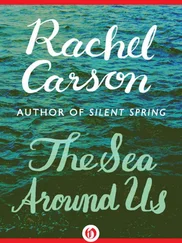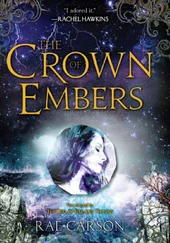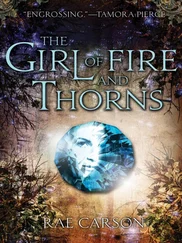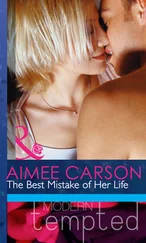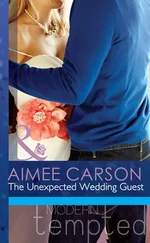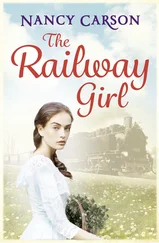The Yellow Bungalow was and is a favourite painting of mine. I can see it in my mind’s eye as I write. It’s small, and almost square, some thirty by thirty-two inches, and shows the interior of the bungalow, whose walls are painted a bright yellow, its perspective tilted a little, as if in a fish-eye lens. A boy holding a melodeon and a piece of paper sits to our left, looking out at us; in the far corner a woman — she might be his mother, or a sister — sits with her arms folded, watching the boy. A cat lies curled in a yellow cane chair: it is either sleeping, or eyeing the three fishes arranged on a white plate on a yellow, patterned tablecloth. There is a black stove against the wall, with a pale blue kettle and teapot on it, and a hurricane lamp with a pale blue shade hangs from the ceiling. Through the window we see a fragment of a landscape: a path, some houses, a green field, a blue strip of sea and mountains of a darker blue beyond. I am reminded of the West of Ireland which I first saw at the age of five. I imagine my father and me opening an unseen door in the yellow bungalow and stepping out into the windswept landscape, where we would wander before returning to the animated murmur of stories being told around the fire at nights: stories of ancient Irish heroes which my father subsequently retold me over the years of my growing up. I remember, too, their opening scenario, where it is always nightfall, the hero has lost his way, and a few lights glimmer on a lonely mountainside. One of these represents a house which the hero will enter. Gorgeous food is arrayed on a table, and there are lit candles everywhere, yet the house seems empty. One can tell that mysterious actions are about to unfold.
I think The Yellow Bungalow is the first painting I ever really saw, I said. My father would bring me to the Gallery as a child. The Mummy in Antiquities was the big draw that had everyone peering over her glass case to see her blackened features and her flaxen hair. I can remember standing on tiptoe to look at her, and thinking she looked nothing like the picture on her coffin. Sarcophagus, my father would say, and proceed to tell me how the ancient embalmers drew the brain out through the nostrils with a hook, and would then discard it, believing it unnecessary to the reanimation of the body in the next life. The heart, the centre of intelligence, was left in place. After seeing the Mummy we would go to view The Yellow Bungalow , and I still remember the glow with which it hit me first. Though of course we don’t know how many layers of remembering have been built on to that, I said to you. My father would point out how the three fishes were a reference to the Miracle of the Loaves and Fishes. The woman was a type of Madonna. As for the boy, who did I think the boy would be? Oh, the boy with the concertina, I said, as if there were another boy. Melodeon, said my father, it’s a melodeon. And I should have known better than to call it a concertina, for my father played the melodeon himself, and I realised I had been trying to be clever.
So my father would lecture me on the importance of names, and when we emerged into the Botanic Gardens, he would point to the broad lawn surrounded by chestnut trees in blossom and ask me how many blades of grass I thought there might be on the lawn, and I said, I don’t know, hundred of thousands, maybe, millions? We can be sure that it is a great many, said my father, but every one is different from its neighbour, because nothing in the world is the same as anything else. Because if any one thing was identical to another thing, then it would occupy the same space as that thing, and be that thing. And because God sees everything, we may be sure He has enumerated those blades of grass, and every blade of grass in the world. And in a like manner He knows all the names that Man has given to things, in every language, in order to distinguish one thing from another.
The trees swayed in the breeze like a line of galleons and I thought of the blue strip of sea in The Yellow Bungalow where ships of the Armada might well have foundered. Of course it was a melodeon, I said, and I could hear my father playing it on Sundays, ‘Nearer My God to Thee’, I said, with the slightly wonky treble notes shimmering above the dark bass, and my reverie was interrupted when my father said, Gabriel, are you listening to me?
So I’m writing this with the Wearever and I can feel the pen writing. The tip of the steel overlay of the nib is slightly upturned, allowing the gold point underneath some play, while keeping it in check when too much pressure is applied. If this were a car, you’d say it had a comfortable suspension. The writing has a spring to it, a bounce which I found difficult to control at first, accustomed as I was to the rigid point of a ballpoint pen or rollerball. But from the beginning I’ve enjoyed using the Wearever, writing whatever came into my head, practising my signature with it just for the feel of the nib and the measured flow of ink on paper. I’m writing this with the Wearever, I’d write, nice Wearever nib to use Wherever wears forever, before moving on to more elaborate nonsense — the quick brown fox jumped over the lazy dog, colourless green ideas sleep furiously. Or, driven by fountain-pen-induced nostalgia, I’d carefully delineate my name and address, as written in my school copy-books a good half-century ago, Gabriel Conway, 41 Ophir Gardens, Belfast, County Antrim, Ireland, Europe, The Northern Hemisphere, The World, The Solar System, The Universe , and wonder, as I did then, what came next in that hierarchy. Or did I write Northern Ireland ? I can’t remember. Wherever.
That’s all very well, you said, but you can’t expect everyone to know what you know when you’re looking at a painting. And what do you know of what I knew when I looked at that painting? The Yellow Bungalow , whatever you want to call it. Don’t you think The Yellow Bungalow is just a bit too easy, too descriptive? Why not The Cat and Fishes ? What does it matter, if you’re looking at it with your own eyes? you said. You bring yourself to a painting, you said.
So what brought you to write to me again? You remember our letters? We used to write to one another even if we were to meet that day, letters as addenda to whatever we’d discussed or fought about the night before, letters as agenda for the next day, adumbrations of the pros and cons, retractions or advancements of positions taken, communiqués that opened up the possibility of renegotiation or compromise; for we believed that written words were sometimes a more accurate record of our thoughts and feelings, because more pondered, whereas spoken words are often ill-advised or ill-considered, and once uttered cannot be retracted; but letters can be drafted and redrafted until they sit better with our thought than the words which first come to mind; moreover, as we write, trying to articulate ourselves, unexpected thoughts sometimes occur to us, that were not part of our original intention, and we change our minds as we write, arriving at conclusions wholly other than those we first envisaged, so that writing to each other, we discovered what we thought. We were the authors and protagonists of an epistolic novel. Meeting in the XL Café, we would read each other’s letters in each other’s presence, silently, as a long-established couple might read the morning papers. Then we would discuss our written statements, seeking clarification on this point or that, like negotiators of a ceasefire or a post-war treaty.
I used a Pentel rollerball then; I’d abandoned writing with a fountain pen some years before. I’d always disliked the slippery feel of a ballpoint, and the Pentel seemed to have more tooth when put to paper. I liked the firm black line laid down by its point, and its thick green plastic flat-topped casing, a classic design that remains unchanged to this day, for I saw one yesterday. And it seems to me now to have been inspired by the classic Parker Duofolds and flat-top Sheaffers of the 1920s, which leads me to put down the Wearever I’ve been writing with till now, and pick up a Gatsby era Sheaffer’s ring-top pen in jade celluloid with little milky flecks in it — the ring would have been attached, as was your Dinkie, to a lanyard to hang from a lady’s neck. As I write, I find myself touching my free hand to my neck for an invisible lanyard, and I think for a moment I could be you, toying with your Dinkie, red and black marble swirls and not this near-translucent green jade.
Читать дальше
